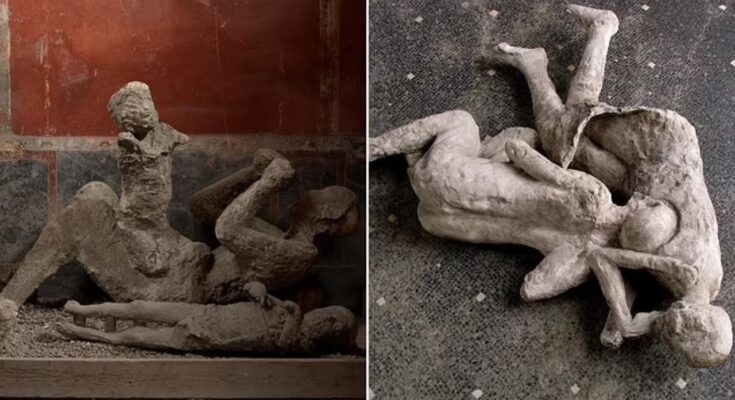Pompeii Victims’ DNA Unveiled: Shocking Discoveries
In a groundbreaking new study, researchers have revealed shocking insights into the DNA of Pompeii victims. This ancient Roman city was famously buried under volcanic ash and pumice after the eruption of Mount Vesuvius in 79 AD. For centuries, archaeologists have been uncovering the remains of the city’s inhabitants, giving us a glimpse into their lives and untimely deaths. Now, with the latest advancements in DNA analysis, scientists have been able to extract genetic material from these ancient bones, opening up a whole new chapter in Pompeii’s history.
The Uncovering of Pompeii
Pompeii was a thriving city in ancient Rome, known for its bustling markets, elaborate villas, and vibrant community. However, all of this came to a sudden halt when Mount Vesuvius erupted, burying the city in a blanket of ash and debris. The volcanic eruption preserved the city in a state of suspended animation, offering a unique snapshot of life in ancient Rome.
The Study
The recent study focused on analyzing the DNA of Pompeii victims to learn more about their genetic makeup and ancestry. By extracting genetic material from the bones of these ancient individuals, researchers were able to piece together a picture of who they were and where they came from. What they discovered was both surprising and enlightening.
Shocking Revelations
One of the most shocking revelations from the study was the evidence of genetic diversity among the Pompeii victims. Contrary to popular belief, the inhabitants of Pompeii were not all of Italian descent. In fact, the DNA analysis revealed a mix of ancestry, including individuals of African and Middle Eastern descent. This suggests that Pompeii was a cosmopolitan city, with a diverse population hailing from different parts of the Roman Empire.
Another surprising discovery was the presence of genetic markers associated with certain diseases. Researchers found evidence of conditions such as malaria and tuberculosis in the DNA of Pompeii victims, shedding light on the health challenges they faced in ancient times. This has led to new insights into the prevalence of disease in the ancient world and the impact it had on vulnerable populations.
The Future of DNA Analysis in Archaeology
The study of Pompeii victims’ DNA marks a major milestone in the field of archaeogenetics. By combining archaeology with genetics, researchers are able to uncover new information about ancient civilizations and the people who inhabited them. This opens up a wealth of opportunities for further research and collaboration between different disciplines.
As DNA analysis techniques continue to advance, we can expect even more groundbreaking discoveries in the field of archaeogenetics. By unlocking the genetic secrets of ancient populations, we can gain a deeper understanding of our shared human history and the forces that shaped our ancestors’ lives.
In conclusion, the shocking DNA reveal from Pompeii victims has provided us with valuable insights into the genetic makeup and ancestry of this ancient population. Through the power of DNA analysis, we are able to piece together the puzzle of Pompeii’s past and gain a greater appreciation for the diversity and complexity of the ancient world. This study represents a significant step forward in our understanding of ancient civilizations and the people who inhabited them.



